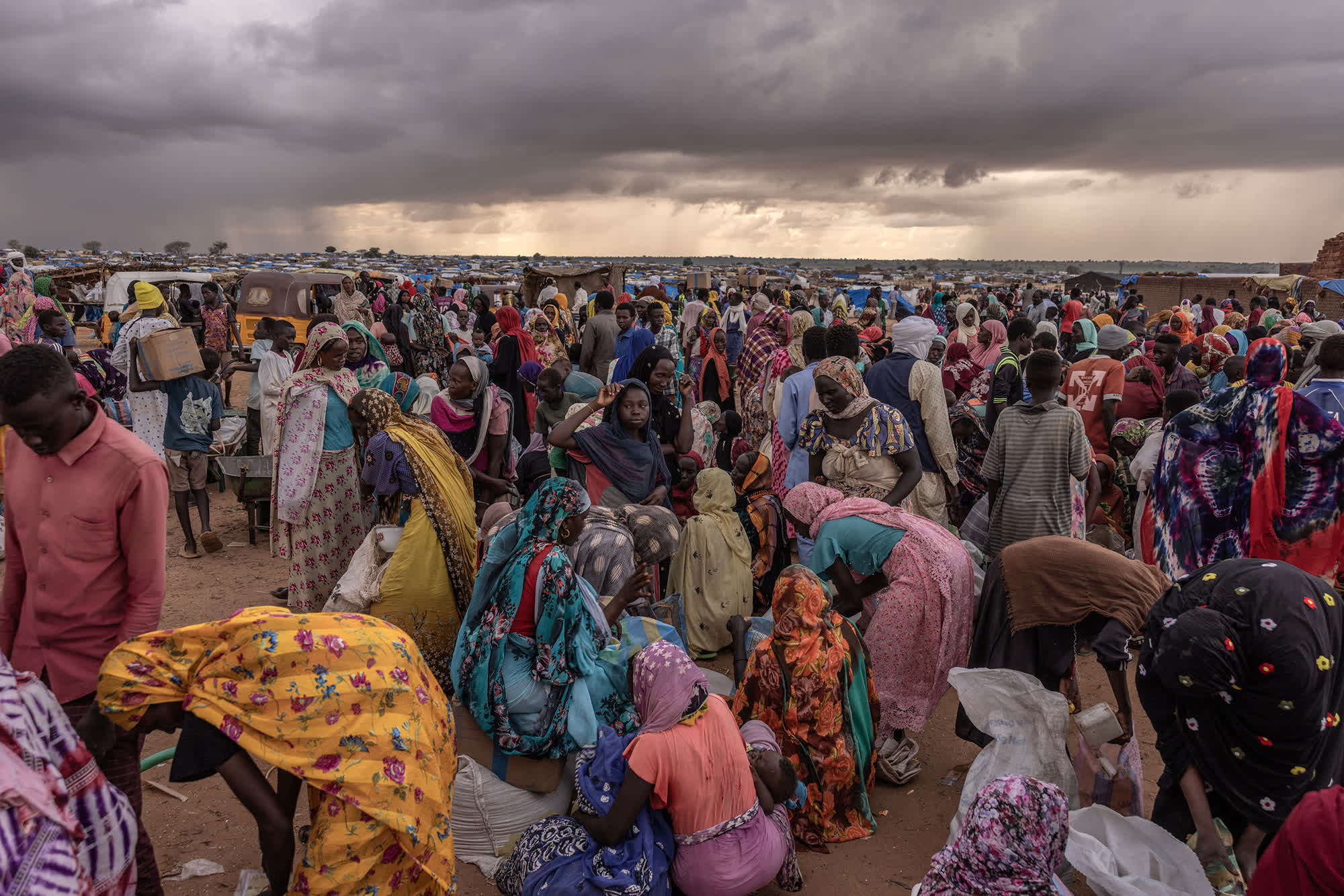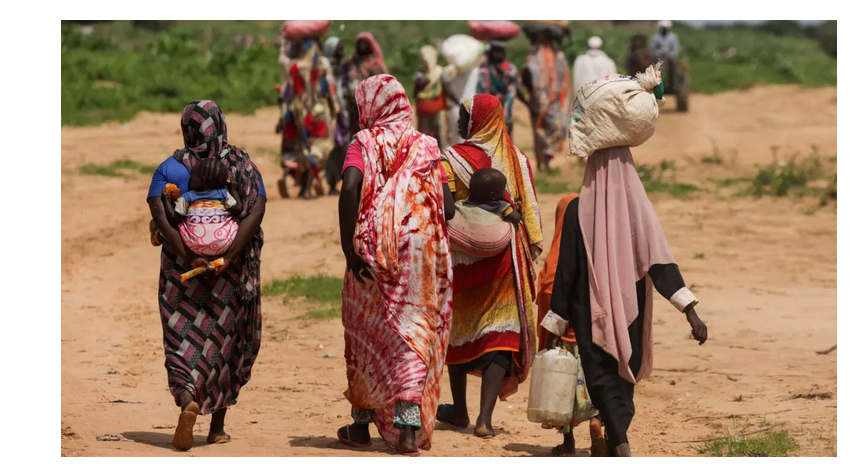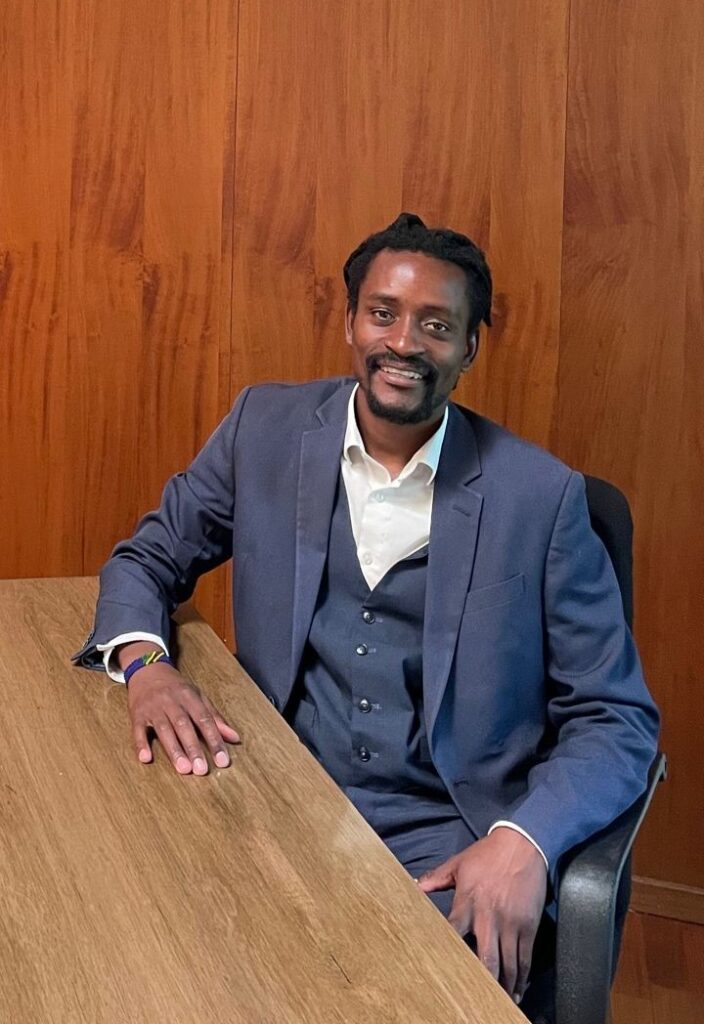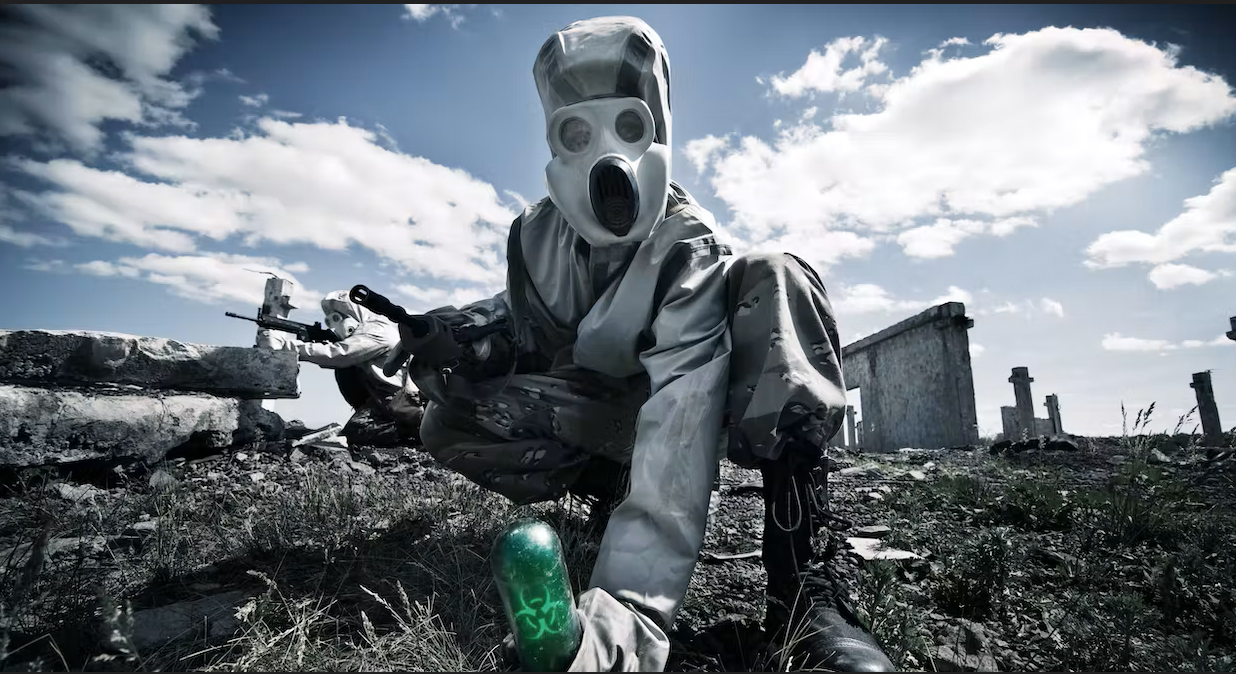
By Author
Although the conflicts of recent decades have been marked by violence, it should be noted that these conflicts have existed since the earliest civilisations[1]. The atrocities that accompany armed conflicts are oftentimes disastrous for civilians not taking part in the hostilities. Violations of the rights of women and girls in the Sudanese conflict are undoubtedly a perfect illustration of this[2]. Even though international humanitarian law protects women and girls in times of conflict, the fact remains that this vulnerable population group continues to suffer all manner of horrors during armed conflicts (and, above all, non-international ones). The conflict that broke out in Sudan (Republic of Sudan) on 15 April 2023 between two rival military factions has had disastrous consequences for women. Dubbed the “war of the generals”, the conflict pits Sudan’s armed forces against the Rapid Support Forces (RSF). UNFPA reports[3] that more than four million women and girls are exposed to gender-based violence in the Sudanese conflict. This particularly alarming against the background of an already dire situation of women’s rights in Sudan before the outbreak of hostilities, as the Special Rapporteur on violence against women in Sudan reported[4] in 2016. Four months on, the fighting continues in the main cities of Sudan, but the fact remains that Sudan still has no functioning government. UN Women says it is “shocked and condemns reports of increasing gender-based violence in Sudan, including conflict-related sexual violence against women and displaced and refugee women”. In the same vein, UN Women Africa expressed its deep concern about the serious consequences of the Sudanese conflict on women and girls and called for immediate action against the violence they face. However, in a context of armed confrontation, it is undeniable that both parties do not respect international legal standards and commit serious violations against women and girls. This article discusses the application of the relevant legal rules for the protection of women applicable to the Sudanese conflict. The first analysis will identify these rules. It will then analyze the various forms of sexual and gender- based violence prevailing against women and finally make proposals for better protection of women in the Sudanese conflict.
Overview of the legal framework for sexual and gender-based violence
Sexual and gender-based violence against Women under the IHL
In international humanitarian law, the rules governing the behaviour of parties to a conflict vary according to whether the conflict is international or non-international in nature. While it is true that some have plausibly and obviously maintained that the clashes in Sudan amount to a non-international armed conflict (NIAC) by virtue of Article 3 common to the 1949 Geneva Conventions (GC)[5] and Article 1(1) of Additional Protocol II,[6] because the fighting in this case was between government forces and a dissident armed group. In any event, the relevant rules of IHL apply in the context of the Sudanese conflict. Although it is true that the protection of women is more relevant in the context of international conflicts, IHL nevertheless provides a general framework for the protection of women in NIAC.
In the context on NIAC, women must be treated with all the special consideration due to their sex (Article 12 of the first GC)[7], because according to commentaries of the first Geneva Conventions[8], they have “distinct needs and may be confronted with physical and psychological risks peculiar to them”. Because of their vulnerability, women must be protected from the effects of war. It requires the parties to the conflict to establish health and safety zones to protect “the wounded and sick, the infirm, and the aged, children under fifteen years of age, pregnant women and mothers of children under seven years of age”. In addition, pregnant women must be afforded special protection. In the same vein, Women shall be especially protected against any attack on their honour, in particular against rape, enforced prostitution or any form of indecent assault. These special measures extend to medical care. In view of the above, Sudan, as a State Party to these Conventions, should respect its obligations to protect women during the NIAC. This is an obligation on both parties to the conflict to respect IHL[9].
2- The IHRL rules
Under customary international law, the IHRL rules apply at all times (DRC vs. Uganda[10], Nicaragua vs. United States of America[11],) For the purposes of this study, it is therefore appropriate to analyze the relevant human rights rules that prohibit sexual or gender-based violence and to which the Republic of Sudan is a State Party[12] (here). Thus, the United Nations Convention against Torture and Other Cruel and Degrading Treatment or Punishment[13] and the International Covenant on Civil and Political Rights[14] will form the legal basis for the IHRL in this essay. The first legal instrument relates to rape, which can cause severe pain and suffering, as recognised by the Appeals Chamber of the International Criminal Tribunal for the former Yugoslavia (ICTY) in the Kunarac case (Paragraph 150)[15]. In addition, sexual and gender-based violence may have consequences for other rights enshrined in the Covenant, in particular the prohibition of slavery (Article 8) and the right to liberty and security (Article 9). Even if these human rights treaties do not contain specific prohibitions on sexual and gender-based violence, these have acquired jus cogens value in the Report of the Special Rapporteur on torture and other cruel and degrading treatment[16], from which no derogation is permitted. Every aspect of women’s lives is affected by conflict. These aspects can involve the destruction of the family fabric, socio-economic development and reproductive health of women. However, these agreements oblige States parties to take all appropriate measures to protect women for rape or sexual exploitation. In view of the above, States are obliged to respect their commitments with regard to IHRL, including Sudan.
Serious gender-based violence against women in the Sudanese conflict
Acts of rape
Many women in the Sudanese conflict are victims of rape. It was reported that women were raped mainly in the cities of Khartoum and Darfur. For example, 57 alleged cases[17] in Khartoum and between April and June 2023, some NGOs recorded 78 cases of rape[18] in Darfur. Numerous accounts of rape committed by RSFs were reported.[19] For example, according to the reports, 221 women and girls were raped in the town of Tabit[20]. Faced with this violence, many women fled Sudan for neighboring Chad. However, even on their journey to a safe haven, women are victims of rape throughout their migratory journeys. For them, the risk is high[21] throughout the journey and can compound the trauma already experienced in their country of origin. In any case, there is a high risk of being trafficked and sexually assaulted[22] because of their frantic search for safety.
This situation is exacerbated by the fact that hospitals are bombarded by the parties to the conflict, preventing women from receiving care. In fact, at the start of the conflict, the WHO recorded 50 attacks[23] on health facilities. It has to be said that the rapes committed by the RSF sometimes lead to pregnancies, and medical monitoring of the mother and baby is virtually impossible. As a result, there is a risk to the health of the baby[24], who could be born prematurely or die after delivery.
Ethnic-based sexual violence
Tribal militias allied to the RSF have joined the conflict. Non-Arab women are particularly targeted by the RSF in the Sudanese conflict. For instance, many of women from the Massalit ethnic group have been targeted[25]. It has been reported that attacks have particularly targeted women from the town of El Geneina. According to NGO reports[26], some of the victims who were interviewed said that the attackers had explicitly mentioned their identity while making threats against non-Arabs. It has been reported that members of the RSF gender-based violence on ethnicity[27] in Darfur. According to the UN High Commissioner’s report[28], this ethnic-based violence leads to other violence, including torture.
Measures taken to put an end to sexual and gender-based crimes
At the time of writing, the Office of the Prosecutor is conducting in-depth investigations[29] into crimes falling within its jurisdiction in the Sudanese conflict. It should be noted that in Resolution 1593[30], the Security Council referred the situation in Darfur since 2022. Although this period of conflict is a long time age, the Office of the Prosecutor has pointed out that this mandate is valid for crimes committed since April 2023. In view of the seriousness of the crimes committed in the conflict between two factions of the army in Sudan, the Office of the Prosecutor is committed to prioritizing[31] investigations into sexual campaigns of mass rape, while ensuring that the “effects of the law are felt in real time”. These measures by the Prosecutor’s Office aim to ensure accountability for rape and other serious gender-based crimes committed against women in the Sudanese conflict.
In the trials currently taking place before the ICC in relation to this conflict, emphasis should be placed on the nature of the crime and the origin of the victim, as well as on the long-term consequences of rape. With regard to the nature of the crime and the victim, the Office of the Prosecutor could take into account the specific nature of sexual violence as an aggravating circumstance at the time as acknowledged in the recent Ongwen case[32]. In addition, discrimination against women because of their ethnicity[33] could also be considered as an aggravating circumstance. Finally, in the case of rape convictions, the long-term consequences on the mental, physical health and the families of female victims particularly as regards the children born of these rapes should be considered as aggravating circumstances. As mentioned in the report by the Office of the Prosecutor, the Sudanese’s government refusal to cooperate under the principle of complementarity could engage its responsibility for undermining the interests of the international community as a whole to go beyond this article.
To overcome this stumbling block, the ICC should prosecute the perpetrators of serious crimes against women, whoever they are and wherever they are, under the principle of universal jurisdiction[34]. This is to avoid impunity and prevent those who commit serious crimes against women in Sudan from being punished. It is important to note that sexual and gender-based violence have been recognised by the International Criminal Court as war crimes and crimes against humanity (Article 7 paragraph (1) (g) of Rome Statute[35]), notably in the Bosco Ntaganda case[36]. In any event, violence against women resulting from the fighting underway in Sudan could constitute war crimes (Article 8 (2) (b) (xxii) and ethnic-based gender-based violence (Article 7 (1) (h). Whatever the case, accountability through ICC prosecutions will help to reduce sexual and gender-based violence against women in the Sudanese conflict and beyond.
[1] Allenby, Braden R. “IN AN AGE OF CIVILIZATIONAL CONFLICT.” Jurimetrics, vol. 56, no. 4, 2016, pp. 387–406. JSTOR, http ://www.jstor.org/stable/26322686. Accessed 25 Feb. 2025.
[2] Medieval Hove, Knocked Ndawana, ‘ Women’s Rights In Jeopardy : The Case of War-Torn South’, published 17 October 2017, available at ,https://journals.sagepub.com/doi/full/10.1177/2158244017737355 accessed 25 February 2025,
[3] United Nations Population Fund (UNPF), Databases ‘ Sudan’, https://www.unfpa.org/sudan, accessed 25 February 2025,
[4] UN Women, ‘Global Database on Violence Against Women’, available at https://data.unwomen.org/global-database-on-violence-against-women?vs=1154 accessed 24 February 2025,
[5] International Committee of the Red Cross (ICRC), Geneva Convention Relative to the Protection of Civilian Persons in Time of War (Fourth Geneva Convention), 75 UNTS 287, 12 August 1949, https://www.refworld.org/legal/agreements/icrc/1949/en/32227 [accessed 25 February 2025]
[6] International Committee of the Red Cross (ICRC), Protocol Additional to the Geneva Conventions of 12 August 1949, and relating to the Protection of Victims of Non-International Armed Conflicts (Protocol II), 1125 UNTS 609, 8 June 1977, https://www.refworld.org/legal/agreements/icrc/1977/en/14705 [accessed 26 February 2025]
[7] International Committee of the Red Cross (ICRC), Geneva Convention for the Amelioration of the Condition of the Wounded and Sick in Armed Forces in the Field (First Geneva Convention), 75 UNTS 31, 12 August 1949, https://www.refworld.org/legal/agreements/icrc/1949/en/18884 [accessed 26 February 2025]
[8] ICRC, ‘ The Geneva Conventions and their Commentaries ‘, https://www.icrc.org/en/law-and-policy/geneva-conventions-and-their-commentaries accessed 24 February 2025,
[9] ICRC Database, ‘ Treaties, States Parties and Commentaries, Convention (I) for the Amelioration of the Condition of the Wounded and Sick in Armed Forces in the Field. Geneva, 12 August 1949., Commentary of 01.01.2016 , Article 62 – Immediate effect , https://ihl-databases.icrc.org/en/ihl-treaties/gci-1949/article-62/commentary/2016 (Last accessed on 26.02.2025),
[10] International Court of Justice, ‘Armed Activities on the Territory of the Congo (Democratic Republic of the Congo v. Uganda), https://www.icj-cij.org/case/116 accessed 24 February 2025,
[11] Military aand Paramilitary Activities in and against Nicaragua (Nicaragua vs. United Sates of America) Merits, Judgment I.C.J Reports 1986, pg. 14
[12] United Nations Human Rights Treaty Bodies, ‘ Ratification Status for Sudan’, available athttps://tbinternet.ohchr.org/_layouts/15/TreatyBodyExternal/Treaty.aspx?CountryID=165&Lang=EN accessed 24 February 2025,
[13] UN General Assembly, Convention Against Torture and Other Cruel, Inhuman or Degrading Treatment or Punishment, United Nations, Treaty Series, vol. 1465, p. 85, 10 December 1984, https://www.refworld.org/legal/agreements/unga/1984/en/13941 [accessed 26 February 2025]
[14] UN General Assembly, International Covenant on Civil and Political Rights, United Nations, Treaty Series, vol. 999, p. 171, 16 December 1966, https://www.refworld.org/legal/agreements/unga/1966/en/17703 [accessed 24 February 2025]
[15] Prosecutor v. Dragoljub Kunarac, Radomir Kovac and Zoran Vukovic (Appeal Judgment), IT-96-23 & IT-96-23/1-A, International Criminal Tribunal for the former Yugoslavia (ICTY), 12 June 2002, https://www.refworld.org/jurisprudence/caselaw/icty/2002/en/40004 [accessed 26 February 2025]
[16] Juan E. Méndez, Report of the Special Rapporteur on torture and other cruel, inhuman or degrading treatment or punishment, A/HRC/28/68, UN Human Rights Council, 5 March 2015, https://www.refworld.org/reference/themreport/unhrc/2015/en/104280 [accessed 26 February 2025],
[17] The Guardian News, ‘Women in Sudan facing a ‘tragedy’ of sexual violence as rape cases rise’, published 29 August, 2023, https://www.theguardian.com/global-development/2023/aug/29/women-in-sudan-facing-a-tragedy-of-sexual-violence-as-cases-rise, accessed 24 February 2025,
[18] Aljazeer, ‘HRW, UN raise alarm over rape accusations against Sudan’s RSF’, published 17 August 2023, https://www.aljazeera.com/news/2023/8/17/hrw-un-raise-alarm-over-rape-accusations-against-sudans-rsf, accessed 25 February 2025,
[19] Office of the High Commissioner : United Nations Human Rights:, (OHCHR), ‘ UN Experts alarmed by Reported widespread use of rape and sexual violence against women and girls by RPF’, https://www.ohchr.org/en/press-releases/2023/08/un-experts-alarmed-reported-widespread-use-rape-and-sexual-violence-against, accessed 24 February 2025,
[20] Tutelage Pepin, ‘ Women Shouldering the Cost of War: Pre- tempting a Gender – Based Crisis In Sudan’, Manara Magazine, published 27 June 2023, available at https://manaramagazine.org/2023/06/a-gender-based-violence-crisis-in-sudan/, accessed 23 February 2025,
[21] Nils Adler, Dallia M. Abdelmoniem, ‘ Don’t let the other soldiers watch: Rape as weapon in Sudan War’, Aljazeera, published 14 August 2023, https://www.aljazeera.com/features/longform/2023/8/14/dont-let-the-other-soldiers-watch-rape-as-a-weapon-of-war-in-sudan, accessed 24 February 2025,
[22] UN Women, ‘ In Sudan, women’s organisations fight back against sexual violence In conflict’, published 19 June 2023, https://africa.unwomen.org/en/stories/feature-story/2023/06/in-sudan-womens-organizations-fight-back-against-sexual-violence-in-conflict, accessed 24 February 2025,
[23] World Health Organisation (WHO), ‘ Sudan health emergency’, Situation ReportNo.2 15 June- 16 July 2023,
[24] World Health Organisation (WHO), ‘ Women and girls hit hard by attacks on health in Sudan, UN agencies warn’, published 20 June 2023
[25] United Nations, ‘ Continued Military Hostilities, Sexual Violence, Attacks against Citizens Pushing Sudan into Catastrophic Humanitarian Crisis, Speakers Warn Security Council’, SC/15381/ 9August 2023, https://press.un.org/en/2023/sc15381.doc.htm, accessed 23 February 2025,
[26] Human Rights Watch, ‘ Darfur: Rapid Support Forces, Allied Militias Rape Dozens’, published 17 August 2023, https://www.hrw.org/news/2023/08/17/darfur-rapid-support-forces-allied-militias-rape-dozens, accessed 23 February 2025,
[27] United Nations, ‘ Sudan: Attacks based on ethnicity may amount to war crimes’, published 13 June 2023, https://news.un.org/en/story/2023/06/1137647, accessed 22 February 2025,
[28] Office of the High Commissioner: United Nations Human Rights, (OHCHR), ‘ High Commissioned for Human Rights: the Reckless, Senseless Conflict In Sudan Has Resulted in a Human Rights and Humanitarian Crisis that In Unfolding at an Alarming Rate and on a Devastating Scale’, published 19 June 2023, https://www.ohchr.org/en/news/2023/06/high-commissioner-human-rights-reckless-senseless-conflict-sudan-has-resulted-human, accessed 22 February 2025,
[29] International Criminal Court, ‘Thirty-seventh report of the Prosecutor of the International Criminal Court to the United Nations Security Council pursuant to Resolution 1593 (2005)’, published 13 July 2023, https://www.icc-cpi.int/news/thirty-seventh-report-prosecutor-international-criminal-court-united-nations-security-council, accessed 22 February 2025,
[30] UN Security Council, Security Council resolution 1593 (2005) [on Violations of International Humanitarian Law and Human Rights Law in Darfur, Sudan], S/RES/1593 (2005), 31 March 2005, https://www.refworld.org/legal/resolution/unsc/2005/en/11282 [accessed 26 February 2025],
[31] International Criminal Court, ‘Policy Paper on Sexual and Gender-Based Crimes’, published June 2014, https://scholarship.law.wm.edu/cgi/viewcontent.cgi?article=1476&context=wmjowl, accessed 22 February 2025,
[32] Open Society Foundations (OSF), The Trial of Dominic Ongwen at the International Criminal Court, December 2016, https://www.refworld.org/reference/countryrep/osi/2016/en/115855 [accessed 26 February 2025],
[33] Isaac, M., & Jurasz, O. (2018). Towards an Intersectional Understanding of Conflict-Related Sexual Violence: Gender, Sexuality, and Ethnicity at the ICTY. International Criminal Law Review, 18(5), 853-882. https://doi.org/10.1163/15718123-01805003, accessed 22 February 2025,
[34] The Scope and Application of the Principle of Universal Jurisdiction: The Report of the Sixth Committee A/64/452-RES 64/117, https://digitallibrary.un.org/record/673338/files/A_RES_64_117-EN.pdf, accessed 22 February 2025,
[35] UN General Assembly, Rome Statute of the International Criminal Court (last amended 2010), ISBN No. 92-9227-227-6, UN General Assembly, 17 July 1998, https://www.refworld.org/legal/constinstr/unga/1998/en/64553, [accessed 25 February 2025]
[36] UN Women, ‘ Statement by UN Women Executive Director Phumzile Mlambo-Ngcuka on the conviction of Bosco Ntaganda by the International Criminal Court : Ending Impunity for International Crimes’, published 8 July 2019, https://www.unwomen.org/en/news/stories/2019/7/statement-ed-conviction-of-bosco-ntaganda-by-the-international-criminal-court, accessed 24 February 2025 February 2025






